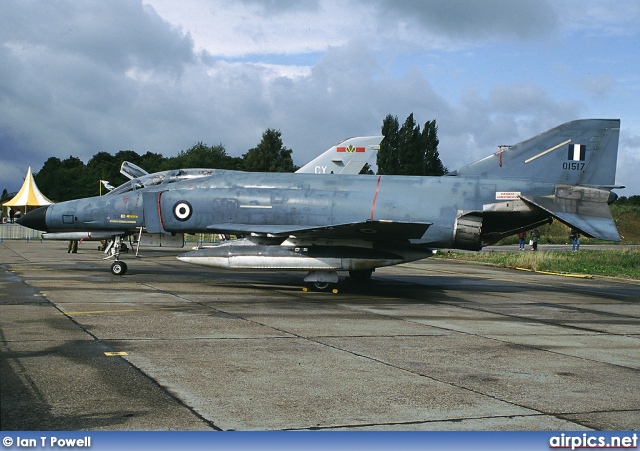In the ever-evolving landscape of military aviation, few aircraft have left a mark as indelible as the McDonnell Douglas F-4 Phantom II. Initially introduced in the 1960s, the F-4 Phantom II earned its stripes as a formidable fighter and reconnaissance aircraft. Today, the F-4E AUP (Avionics Upgrade Program) represents the pinnacle of the Phantom’s modern evolution, blending its storied legacy with state-of-the-art technology. This updated version is not only a tribute to the aircraft’s enduring legacy but also a powerful testament to the advancements in military aviation.

A Legacy of Excellence
The F-4 Phantom II first entered service with the U.S. Navy in 1961, and its versatility soon earned it a prominent place in the air forces of multiple nations. Known for its speed, agility, and combat effectiveness, the F-4 became a staple in Cold War-era air power. Its history includes notable combat achievements and missions across various theaters, from the skies of Vietnam to the deserts of the Middle East.
Despite its venerable age, the F-4 Phantom II remains a key asset for several air forces around the world. The F-4E, a specific variant, is particularly renowned for its precision strike capability and impressive performance. The AUP modernization program has ensured that this iconic aircraft continues to play a crucial role in modern air combat.

The F-4E AUP: Breathing New Life into a Classic
The F-4E AUP represents a significant leap forward in terms of avionics and systems upgrades, transforming the Phantom II into a cutting-edge warfighter. The program focuses on enhancing the aircraft’s electronic warfare, radar, and avionics capabilities, ensuring it can hold its own against the latest threats and technologies.

Avionics Upgrades
At the heart of the F-4E AUP’s modernization is a comprehensive avionics overhaul. This includes the integration of advanced radar systems, improved electronic countermeasures, and updated navigation equipment. The new radar systems provide enhanced detection and tracking capabilities, allowing the F-4E AUP to engage targets with greater precision and effectiveness.
Electronic Warfare Enhancements
The F-4E AUP also benefits from significant upgrades in electronic warfare (EW) systems. These enhancements allow the aircraft to better detect and counteract enemy radar and missile systems, increasing its survivability and effectiveness in contested environments. Modern EW systems ensure that the F-4E AUP remains a potent adversary in electronic warfare scenarios.

Cockpit Modernization
One of the most noticeable changes is the modernization of the cockpit. The F-4E AUP features updated cockpit displays and controls, providing pilots with a more intuitive and user-friendly interface. This modernization not only improves situational awareness but also enhances pilot performance and reduces workload during high-stress missions.
Operational Impact
The upgrades provided by the F-4E AUP have reinvigorated the Phantom II, extending its operational relevance well into the 21st century. Air forces that have invested in the AUP program benefit from a more capable and versatile aircraft, capable of performing a wide range of missions from air superiority to precision strike and reconnaissance.
In regions where the F-4E has historically been a key player, the AUP upgrades enhance its ability to contend with modern threats. The aircraft’s improved radar and electronic warfare capabilities allow it to operate effectively alongside newer generation fighters and advanced air defense systems.
Global Reach and Future Prospects
The F-4E AUP is not confined to one air force; it has been adopted by several nations that continue to value the Phantom II’s robust performance and reliability. The modernization program has ensured that the F-4E remains a significant component of their air power, reflecting its enduring legacy and versatility.
Looking ahead, the F-4E AUP’s continued relevance highlights the importance of upgrading existing platforms to keep pace with technological advancements. The success of the AUP program demonstrates how classic aircraft can be revitalized to meet contemporary operational demands, extending their service life and maintaining their strategic value.
Conclusion
The F-4E AUP is a testament to the enduring legacy of the McDonnell Douglas Phantom II and a shining example of how modern technology can breathe new life into classic designs. With its advanced avionics, enhanced electronic warfare capabilities, and modernized cockpit, the F-4E AUP stands as a powerful and versatile asset in the arsenals of air forces around the world. As the Phantom II continues to soar through the skies, the F-4E AUP ensures that this legendary aircraft remains a formidable force in modern air combat.





